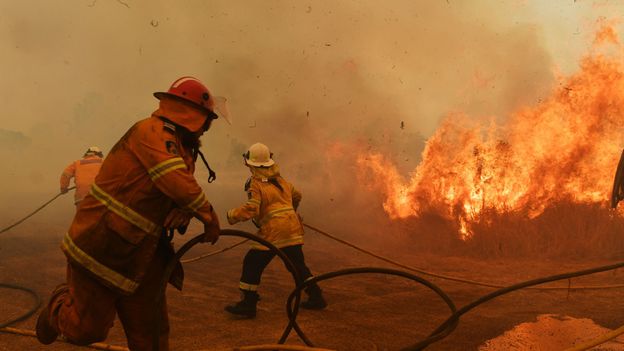Exactly how stratospheric warming could affect weather, almost all of which occurs in the troposphere, is not yet known, however. Changes in the heat of the stratosphere in turn changes the circulation of winds, says Karen Rosenlof of the National Oceanic and Atmospheric Administration (NOAA)’s Chemical Sciences Laboratory. “Changing the winds can change how waves propagate in the stratosphere, and that provides the feedbacks on the troposphere.” But the impact on surface weather is “going to depend on the distribution of the heating in the stratosphere, so it’s not really possible to generalise”, she says.
“The big thing we’ve already learnt is that wildfires can be important for several effects in the stratosphere,” says Stocker. “It’s a big experiment. And in my opinion, I don’t want to try out the changes. Researchers see there can already be harmful effects.”
Albedo and evaporation
Wildfires can also influence climate back on the ground.
One mechanism involves changes to a landscapes’ albedo, or ability to reflect light. In the aftermath of a fire, charred surfaces can reduce albedo, leading to an increase in surface warming. Conversely, a reduced forest canopy can raise albedo by exposing more reflective entities such as grass or snow, leading to a cooling effect.
Another process involves the evaporation of water. Thriving plants release water from their leaves in a process known transpiration, and water also evaporates directly from the soil and canopies. The surrounding air is cooled as a result. But when wildfires suppress this, warming increases.
A 2019 study which investigated the interplay of these factors found that the average surface temperature can warm for at least five years after flames are extinguished. Reduced transpiration was found to be the main cause of this, says Zhihua Liu, an ecology researcher at the University of Montana and lead author of the study.
“If there are more frequent and severe fires in the future, this land surface warming may contribute to climate warming,” he adds. “However, the interactions among climate warming, vegetation dynamics, and fire are very complex, and yet to be fully understood.”
‘It‘s a big experiment‘
With wildfires impacting the climate system in so many ways, understanding the different interactions and timescales is essential for understanding their overall impact in the long term. “We need to understand the net outcomes because we need to understand how fast to reduce our human CO2 emissions,” says Stocker.
There are suggestions that solar geoengineering, which would simulate the cooling effects of volcano and wildfire smoke, could help address some of climate change’s worst effects by artificially injecting aerosols into the stratosphere.
But doing so when we cannot yet fully model wildfires’ myriad impacts would be unwise, Stocker says. “At the moment, we don’t know what geoengineering would do. [Studying wildfires] helps us to understand what changes there could be – but hopefully we won’t try a big geoengineering scenario.”
—
Join one million Future fans by liking us on Facebook, or follow us on Twitter or Instagram.
If you liked this story, sign up for the weekly bbc.com features newsletter, called “The Essential List” – a handpicked selection of stories from BBC Future, Culture, Worklife, Travel and Reel delivered to your inbox every Friday.

